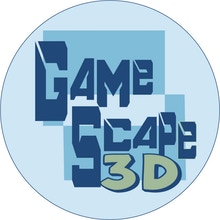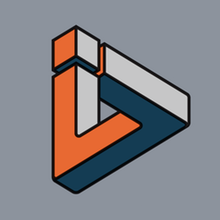Inov3D has been given the honour to Alpha test Luban Lithophane Maker feature. In this article, we shall be going over what we have tested and our results. We are going to continuously be updated when Luji Chen from Luban updates the lithophane maker with new features.
There are some other beta testers out there, who do things differently from us, but here is our version. In all of our test prints, we are using the Tevo Tornado 3D Printer, Simpify3D for the Slicer and also using the same picture.
From test FIVE that we added Inov3D and Luban’s logo to the picture, this was because we wanted to see how the text shows up. There were some other small changes that we tried, from full colour to black and white; also there are some settings that we did switch to enhance the lithophane effect, you’ll notice all the steps we went through to achieve the impact we have.
To clarify this, YES, Luban lithophane maker is more advanced than any of the other lithophane generators that we have tried, but overall Luban itself does take time to get used to as there is a lot to learn. Hands down this for us is one of our go-to 3D printing software. Have you seen Luban features? Check them out now.
Interested in downloading Luban Software click here
Other Lithophane Makers
-
Alpha 0.1 09/04/2019
Luban Lithophane Maker Alpha 0.1 09/04/2019
For this version (0.1) the lithophane maker is very basic for just now, once you scroll down to the most updated version, as you can see that the Luban lithophane creator has progressed a lot since the first test.
- Shape Flat
- Unit MM, Inch, CM. DM, Meter
- Select Image
- Model Size Z
- Minimum Thickness
- Max Thickness
- Export
For test ONE, TWO and THREE we used Sunlu PLA+ Ivory White filament. Test FOUR and FIVE, Eryone white PLA filament was used. In our eyes both of the plastic came out the same; there was no defect or changes to the quality of the finished 3D print.
The reason behind this change was in fact of a user error, what happened was the Sunlu ivory white did not pop out on the lithophane, so it had us thinking was it because of the filament. So we went onto trying the Eryone white PLA when we tried this filament it came out the same. So again we were puzzled it wasn’t standing out!
 but all of a sudden we thought “HEY” why don’ we increase the thickness of the 3D model.
but all of a sudden we thought “HEY” why don’ we increase the thickness of the 3D model.Underneath the picture, there are tests 1-5, on the information about our results and the changes.

Luban Lithophane Test 1-5
- Test One
This lithophane came out okay, but I think we may need to go a little thicker in the second test. There was a stringing problem, but this was easy to fix. You lower the temperature on the extruder and change the retraction settings. In the end, there won’t be any strings attached. We used model size z 50, the minimum thickness of 0.8 and the maximum thickness 2.
- Test Two
Same settings as above but we changed the maximum thickness to 3, it didn’t change because you need to press enter, this failed by user error as we did not know you had to do that. So for this test, the maximum thickness was two so no change there.
- Test Three
The reason we edited the picture in photoshop to black and white was to enhance the depth, with light and dark. Using contrast to make the image stand out more, the lighter parts more light and of course the dark elements to go even more mysterious. Again the settings were the same expect the maximum thickness is set at 3. In the picture, it slowly starts standing out but let’s go further.
- Test Four
Here is where we changed the filament to the Eryone PLA white, using a maximum thickness of 4. The details are getting a lot better every time going up a depth, don’t go overboard as you won’t get light through the lithophane. Because the thicker it is, the less the sun shines through, and the affect will be reduced.
- Test Five
The test we talked about earlier about the Luban and Inov3D logo. It was just a trial at first, to see if the text would show up on such a small print. We are amazed how good it came out, it’s great how the small text (if you can dream it, we can shape it) showed up but it would help if we made the model bigger for the smaller text to show up better. Overall the whole lithophane came out amazing compared to what we first had! The maximum thickness 5, perfect thickness for us to use.
xIn this alpha test 0.1 i saw no need to make any changes to the current features in this version. Love the export feature, lets you go back in and change the settings of a lithophane you have already made. I like the 5th test the most, the settings we like on this version is the minimum thickness of 0.8 maximum thickness 5 with a black and white picture.
-
Alpha 0.2 09/12/2019
Luban Lithophane Maker Alpha 0.2 12/04/2019
Since the last version Luji Chen, the owner of Luban has added more features these features are –
- Positive and negative lithophanes
- Border light and dark
- Border size
- Base size
- Slant (Degree)
- Back Light
- Resolution

Luban Lithophane Test 1-5
- Test 1
Using the settings we liked on the last test alpha 0.1 test 5. The new settings that are using are resolution 0.1, border dark, positive, border size 3, base size 40 slant (degree) 10. I noticed there is a backlight feature. It allows you to see how the lithophane will appear.
xThere was only ONE test in this version because some changes will need to be made. I shall list them bellow FAILWhat Changes To Make
The base and the lithophane should be two separate parts, for the main reason, it is best to 3D print a lithophane vertically. To point out this is so light won’t affect the layers as much, the more of a degree you have, the more effective the light has on the layers. Over extrusion and under extrusion can also affect the outcome of the lithophane as well as infill it is best to set this as 100%, but this is nothing about Luban. It is just something that can occur on any 3D printer.
If you make them two separate parts, this allows you to print the base and the lithophane in two different colours. It is ideal if you want to change over the lithophanes to a different one. Everyone is different, but we suggest if using the base, support is needed as it is not touching the build plate completely.
Our Suggestion
Keep all the features so you can control the base and border but make it, so the base and the lithophane generates separately. In the base, you can make a part that you can slip the lithophane into. For borders, you would need to make it stay the same thickness for inserting it into the lithophane base; this would only need to be for the bottom part.
-
Alpha 0.3 09/12/2019
Luban Lithophane Maker Alpha 0.3 20/04/2019
slant still there haven’t removed it

In this version, there is now a lot more shapes Arc, Rectangle, Hexagon, Octagon, Dodecagon, and of course Cylinder in this last test there is also a hanger method and lamp socket method for the lamps you can turn it upside down for this it depends on how your lamp is
TO BE CONTINUED
-
Luban Lithophane Features In Depth
Luban Lithophane Maker Settings
Let’s talk more in depth about the settings the Luban Lithophane Maker feature has so far
- Shapes
There are many shapes in the Luban lithophane maker Flat, Arc, Hexagon, Rectangle, Octagon, Dodecagon, Cylinder.
- Unit MM, Inch, CM. DM, Meter
Do you like working with a specific measurement unit? You can choose from the list above.
- Select Image
In some shapes, you can have multiple images or single images. It depends on the form you chose, to select various models it is simple to go to Select photo Browse and select the photos you want.
- Model Size Z
Model Z direction size, In some shapes only Z direction size, is needed. The format in other directions is calculated based on the photo size.
- Minimum Thickness
Adjusts the minimum thickness of your lithophane.
- Max Thickness
Adjusts the maximum thickness of your lithophane, the higher the width, the more light depth you will get.
- Export
A handy feature that I don’t see on any other lithophane maker and this lets you export your lithophane to edit it at a later point in time.
- Positive and negative lithophanes
Gives you a positive or negative lithophane
- Border light and dark
Do you want a border on your lithophane? This setting will provide you with that a light edge that will be a thinner print. A dark limit will be a thicker print.
- Border Size
Here you can adjust the thickness of your border, if you put the value as 0 no limit will be added
- Base size
Changes the size of your base if you make the value 0 no plate will be attached.
- Slant (degree)
Gives your lithophane a slant, you can change the angle by increasing or decreasing the value.
- Backlight
Now, this is a handy little feature; it gives you a simulation of what your lithophane is going to look.
- Hanger
do you want your lithophane to hang high or low then you can choose this feature hanger yes or hanger no?
- Lamp Socket
Ever wanted to put your finished lithophane on to a lamp well you can with the lamp socket, change the value to correspond with the size of your lamp socket,
- Upside Down
Is your lamp on the ceiling or a table with this you can change the orientation your lithophane will be.
The post Luban Lithophane Maker – Will It Be Better Than The Rest appeared first on Inov3D.









